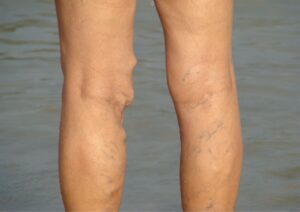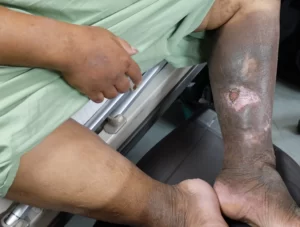Chronic venous insufficiency, a condition characterised by the improper functioning of veins. It can lead to a range of uncomfortable symptoms and complications.
To effectively diagnose this condition and tailor appropriate treatment plans, the experience of a vein doctor( Phlebologist) becomes invaluable.
By employing a combination of thorough medical history assessment, physical examinations, and specialised diagnostic tests, these doctors can accurately identify venous insufficiency and provide patients with the relief and care they need.
In this article, we will explore the various diagnostic techniques utilised by vein doctors ( Phlebologist) to uncover the underlying causes of venous insufficiency and pave the way for effective treatment strategies.
What Is Chronic Venous Insufficiency (CVI)?
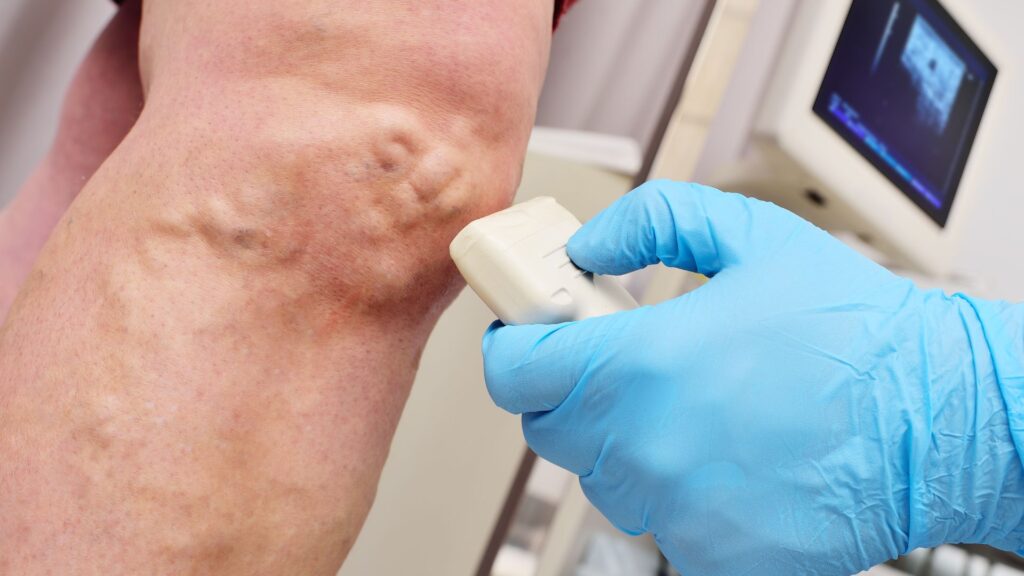
Chronic Venous Insufficiency (CVI) is a medical condition characterised by the inadequate flow of blood from the legs back to the heart, resulting in the accumulation of blood in the leg veins themselves.
One of the common manifestations of chronic venous insufficiency is the development of varicose veins, which are enlarged and twisted veins that appear bulging and often cause discomfort.
By accurately diagnosing varicose veins, phlebologists can develop appropriate treatment plans to alleviate symptoms and prevent potential complications associated with Chronic Venous Insufficiency.
Can a Blood Test Detect Venous Insufficiency?
No, a blood test cannot directly detect venous insufficiency. While blood tests are valuable diagnostic tools for many medical conditions, they are not specifically designed to identify venous insufficiency. Venous insufficiency is primarily diagnosed through a combination of physical examination and specialised imaging tests.
How is Chronic Venous Insufficiency Diagnosed?
Chronic Venous Insufficiency is typically diagnosed through a combination of medical history evaluation, physical examination, and specialised diagnostic tests. The diagnostic process aims to assess the symptoms, identify any underlying causes, and evaluate the severity of the condition.
During the medical and family history evaluation, the phlebologist will inquire about symptoms of chronic venous insufficiency. Those symptoms can include leg pain, leg swelling, heaviness, spider veins, varicose veins or skin changes such as venous stasis ulcers. They will also ask about any relevant medical conditions or family history that may contribute to venous insufficiency.
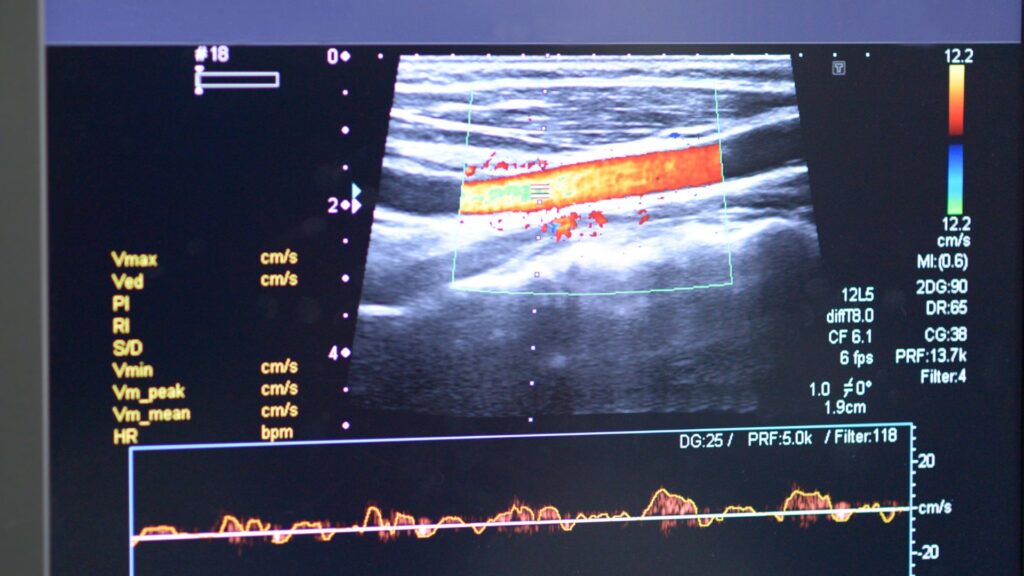
A thorough physical exam is conducted to assess the health conditions and affected area. The phlebologist will visually inspect calf muscles and the legs, looking for visible signs such as varicose veins, skin discoloration, or ulcers. They may also palpate the legs to check for tenderness, warmth, or swelling.
Specialised diagnostic tests are commonly employed to confirm the diagnosis and provide further insights. The most frequently used test is duplex ultrasound, which combines traditional ultrasound with Doppler technology. It allows for visualisation of blood flows in the veins and assessment of blood flow to deep veins. This test can identify blockages, valve malfunctions, or other abnormalities contributing to venous insufficiency.
In some cases, additional tests other treatments may be recommended, such as venography (a contrast dye-based imaging technique) or magnetic resonance imaging (MRI) if further evaluation is required.
What Imaging is Best For Venous Insufficiency?
The most commonly used and recommended imaging technique for evaluating venous insufficiency is duplex ultrasound. Duplex ultrasound combines traditional ultrasound imaging with Doppler technology, allowing for both visualisation of the leg veins and assessment of blood flow from a healthy vein to deep vein.
Why Do Phlebologists Use an Ultrasound?
Duplex ultrasound provides several advantages for diagnosing chronic venous insufficiency. It is a non-invasive procedure that does not involve radiation exposure or the need for contrast agents. It can be performed at the bedside or in an outpatient setting, making it convenient and accessible for patients. Duplex ultrasound provides real-time imaging, allowing healthcare professionals to assess venous anatomy, detect any blockages or obstructions, and evaluate the function of the venous valves of the leg veins.
It is also a valuable tool in the assessment of deep vein thrombosis. In the case of deep vein thrombosis, the phlebologist can locate the blood clot and measure the length of it as well as assessing the haemodynamic impact of the deep vein thrombosis.
How Does Duplex Ultrasound work?
During a duplex ultrasound examination, a handheld device called a transducer is used to emit sound waves into the body. The transducer detects the echoes produced by the sound waves as they bounce off the veins and surrounding tissues. The Doppler component of the examination analyses the frequency shifts in the echoes, allowing for the assessment of blood flow direction and velocity.
With duplex ultrasound, Phlebologists can accurately diagnose chronic venous insufficiency. They can also identify and localise areas of venous reflux (backward flow) or obstruction, determine the extent of valve dysfunction, and assess the overall condition of blood vessel and the symptoms of chronic venous a system. This information is crucial for accurate diagnosis and planning appropriate treatment strategies for venous insufficiency.
In summary, duplex ultrasound is considered the imaging modality of choice for diagnosing venous insufficiency. It provides detailed information about venous anatomy, blood flow, and valve function, helping healthcare professionals make informed decisions regarding patient care.
What Type of Doctor Diagnoses Venous Insufficiency?
Several healthcare professionals can diagnose venous insufficiency. The type of doctor who typically handles the diagnosis and management of a venous disease or insufficiency causing blood, are phlebologists and vascular surgeons. These medical professionals have experience in conditions affecting the blood vessels, including veins and arteries.
Other specialists who may be involved in the diagnosis and treatment of chronic venous insufficiency include:
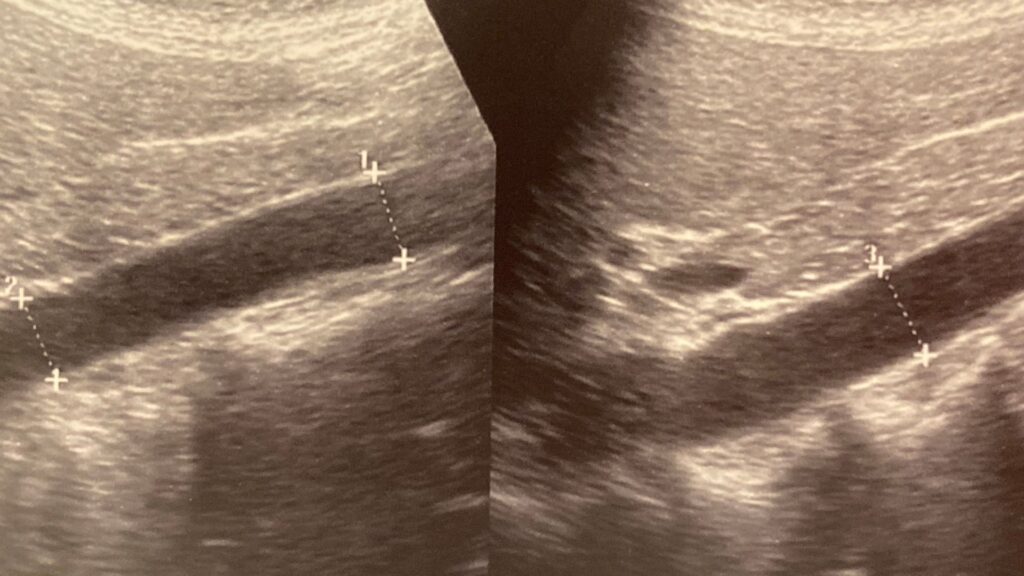
1.Phlebologists:
Phlebologists are medical professionals who focus on the diagnosis and treatment of venous diseases, playing a crucial role in the management of conditions affecting the veins. With their extensive knowledge in venous anatomy and physiology, phlebologists employ a range of techniques and interventions to provide relief and improve the overall health and well-being of patients grappling with venous disorders.
2. Vascular surgeons:
Vascular surgeons are skilled medical specialists who specialise in diagnosing, managing, and surgically treating conditions affecting the arteries, and veins. With their knowledge of vascular anatomy and expertise in open invasive procedures, vascular surgeons play a critical role in preserving and restoring optimal blood flow, ensuring the overall health and functionality of their patients’ circulatory systems.
3. Dermatologist:
Dermatologists may be involved in diagnosing and treating skin changes or conditions associated with venous insufficiency, such as skin discoloration or ulcers.
3. General practitioner or primary care physician:
General practitioners or primary care physicians often play an initial role in evaluating patients with symptoms suggestive of venous insufficiency. They may refer patients to a specialist for further evaluation and management.
It is important to note that the specific healthcare professional involved in the diagnosis and management of chronic venous insufficiency can vary based on factors such as geographical location, healthcare system, and individual patient needs. If you suspect you have chronic venous insufficiency, it is recommended to consult with your primary care physician, who can refer you to an appropriate specialist for further evaluation and a treatment plan.
What are The Treatments for Chronic Venous Insufficiency?
The treatment options for chronic venous insufficiency (CVI) focus on relieving symptoms, improving blood circulation, and preventing complications.
The treatment approach may vary based on the severity of the condition and individual patient needs.
Non-surgical interventions often form the first line of treatment and include various lifestyle changes and modifications to reduce blood flow, such as regular exercise, elevation of the legs, weight management, and avoiding prolonged periods of standing or sitting.
Compression therapy, involving the use of compression stockings or bandages, can help improve blood flow and reduce swelling.
In cases where varicose veins are causing significant discomfort or complications, a minimally invasive procedure such as sclerotherapy or endovenous ablation may be recommended. These procedures target the affected varicose veins, closing them off or removing them, allowing for improved blood flow.
Vascular surgery, such as vein ligation and vein stripping, are reserved for severe cases.
By providing information about the various treatment options for chronic venous insufficiency, individuals with varicose veins can gain a better understanding of their potential treatment journey and discuss appropriate strategies with their phlebologists.





